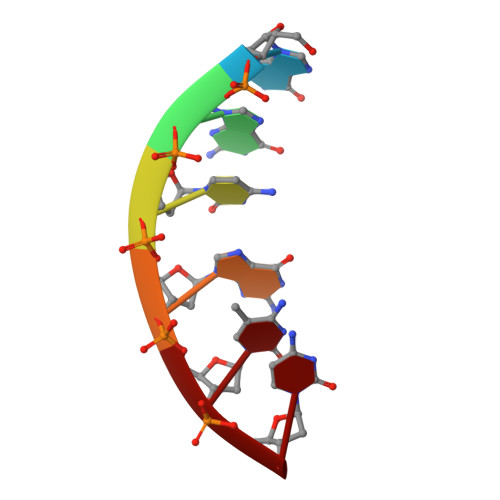The extended and eccentric E-DNA structure induced by cytosine methylation or bromination.
Vargason, J.M., Eichman, B.F., Ho, P.S.(2000) Nat Struct Biol 7: 758-761
- PubMed: 10966645
- DOI: https://doi.org/10.1038/78985
- Primary Citation of Related Structures:
1F69, 1F6C, 1F6E, 1F6I, 1F6J - PubMed Abstract:
Cytosine methylation or bromination of the DNA sequence d(GGCGCC)2 is shown here to induce a novel extended and eccentric double helix, which we call E-DNA. Like B-DNA, E-DNA has a long helical rise and bases perpendicular to the helix axis. However, the 3'-endo sugar conformation gives the characteristic deep major groove and shallow minor groove of A-DNA. Also, if allowed to crystallize for a period of time longer than that yielding E-DNA, the methylated sequence forms standard A-DNA, suggesting that E-DNA is a kinetically trapped intermediate in the transition to A-DNA. Thus, the structures presented here chart a crystallographic pathway from B-DNA to A-DNA through the E-DNA intermediate in a single sequence. The E-DNA surface is highly accessible to solvent, with waters in the major groove sitting on exposed faces of the stacked nucleotides. We suggest that the geometry of the waters and the stacked base pairs would promote the spontaneous deamination of 5-methylcytosine in the transition mutation of dm5C-dG to dT-dA base pairs.
- Department of Biochemistry and Biophysics, ALS 2011, Oregon State University, Corvallis, Oregon 97331-7305, USA.
Organizational Affiliation:
















